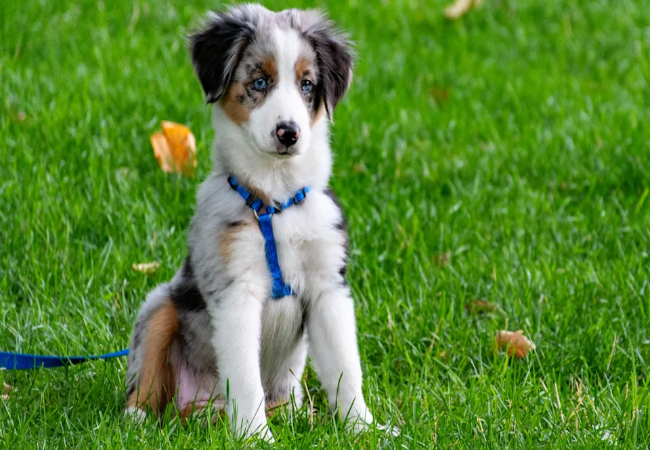Miniature American Shepherd 2025: Small Herding Powerhouse Guide 🐶✨

In this article
Miniature American Shepherd 2025: Small Herding Powerhouse Guide 🐶✨
By Dr. Duncan Houston BVSc
Introduction 🌟
The Miniature American Shepherd (MAS) is a lively, intelligent herding breed that resembles its larger cousin, the Australian Shepherd, but in a compact form. Originating in California in the 1960s, the MAS was bred to be a smaller but equally capable farm dog—ideal for modern families. This 2025 guide covers everything from history and physical traits to exercise, health, grooming, training, and lifestyle suitability.
1. Origins & History 📜
- Developed in California in the 1960s by breeding the smallest Australian Shepherds to create a compact herding companion.
- Initially called “Miniature Australian Shepherd,” it gained AKC recognition in 2015 as a standalone breed.
- Still used in herding, agility, obedience, tracking, and dog sports.
2. Size & Appearance 🧩
- Height: Males 14–18 in; Females 13–17 in.
- Weight: 20–40 lb.
- Coat: medium-length double coat in blue merle, red merle, black or red, often with tan or white markings.
- Eyes may be expressive and multi-colored; tails can be docked, naturally bobbed, or full.
3. Temperament & Personality ❤️
- Highly intelligent, eager to learn, affectionate, and very loyal to family.
- Wary of strangers but warms quickly—excellent watchdogs.
- Natural herding instincts—may nip or bark to control play; early training helps manage this behavior.
4. Exercise & Mental Enrichment 🏃♂️
- High energy: needs 1–2 hours of activity daily, including brisk walks, play, agility, and herding exercises.
- Engages readily in dog sports: herding, agility, rally obedience, tracking, flyball, and frisbee.
- Bored dogs may bark, chew, or become anxious—provide toys and mental games to prevent mischief.
5. Grooming & Coat Care ✂️
- Brush at least weekly, increasing frequency to daily during seasonal “blow-outs” in spring/fall.
- Bathe monthly or as necessary; no professional trims required—just occasional sanitary clipping.
- Maintain basic hygiene: weekly ear cleaning, nail trims, and regular dental brushing for oral health.
6. Health & Lifespan 🩺
Lifespan: typically 12–13 years—but lifespan ranges up to 15 years in some lines.
Key Health Concerns:
- Eye issues: progressive retinal atrophy (PRA), juvenile cataracts, iris coloboma; screened via ophthalmologist exams.
- Collie eye anomaly (CEA): congenital eye defect; testable from 6 weeks.
- Hip dysplasia & patellar luxation: manageable through screening and supplements.
- MDR1 mutation: genetic risk for drug sensitivity; testing is essential to avoid toxic medications.
- Degenerative myelopathy: late-onset spinal condition in some lines.
Preventive Care:
- Annual veterinary exams with early eye and genetic screenings.
- Maintain a healthy weight via a balanced diet and exercise.
- Appropriate joint supplements (glucosamine, omega‑3s) if hip/patella issues arise.
- Pet insurance is strongly recommended due to potential genetic issues.
7. Nutrition & Feeding 🍽️
- Puppies: feed high‑quality medium-breed puppy food until ~12 months.
- Adults: 2-level meals/day; adjust portions based on activity level, using slow feeders if needed.
- Consult your vet on joint supplements and weight control.
8. Training & Socialization 🎓
- Responsive to positive reinforcement—use treats, toys, and praise for best results.
- Enroll in puppy classes early to curb excessive barking and herding behavior.
- Crate training helps prevent separation anxiety and destructive tendencies.
- Ongoing mental tasks—agility, tricks, tracking—will keep them engaged long-term.
9. Family Fit & Lifestyle 🏡
- Ideal for active families, singles, or seniors who enjoy exercise and training.
- Great with children and pets if introduced properly; herding and nipping should be managed.
- A secure yard is preferred; apartment living may work with diligent daily activity.
- Not suited for being left alone all day—companion presence is essential.
10. Adoption & Breeder Advice 🌟
- Seek AKC or MASCA-registered breeders with health clearances for eyes, hips, patella, and MDR1.
- Adoption opportunities exist through herding breed rescues and shelters.
- Expected price: $2,000–3,000 for well-bred puppies.
11. FAQs ❓
- Do Mini American Shepherds shed? Yes—they shed year-round with heavier seasonal blowouts.
- Are they good with kids? Yes—with correct socialization and supervision during play.
- Do they bark a lot? They can bark when bored or alert; training helps moderate it.
- Can they live in apartments? Possible with consistent exercise and mental stimulation.
- How long do they live? Typically 12–13 years, sometimes up to 15.
12. Ask A Vet, 🐾
- Ask A Vet: Get instant support on genetic health, joint supplements, eye conditions, and behavior advice.
13. Final Thoughts ✅
The Miniature American Shepherd is a brilliant, energetic, and devoted companion—perfect for owners who can offer structure, exercise, and mental engagement. Their compact size and agility make them adaptable pets, while their intelligence and loyalty make them lifelong friends. For comprehensive support and expert care, visit AskAVet.com and download the Ask A Vet app today.






